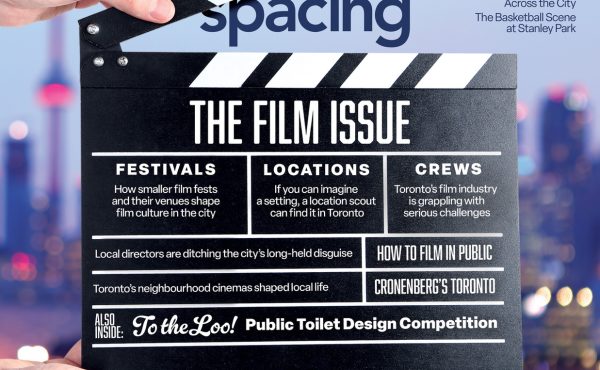
As commuters boarded the 505 streetcar at Broadview station this morning, they were greeted by Mayor David Miller and TTC Chairman Adam Giambrone as they unveiled the new vehicle arrival system at the station.
The LED screen on the island streetcar stop is fully solar powered and tells riders not only what time it is, but in exactly how many minutes the next two streetcars will arrive.
Riders at Spadina may have seen the year-long pilot of the LCD screens on the streetcar deck, but screens like those will now be implemented in stations across the GTA within the next year. The indoor screens display the next routes that are inbound to that station and the exact wait-time.
Inside the Broadview station, the LCD screen shows the time of arrival of the two streetcars that come into that station, but don’t announce the times of arrival for the buses.
By the end of 2010, the TTC plans to have LCD signs installed at Main Street Station, Bathurst Station and St. Clair Station in addition to the existing ones at Spadina and Union Stations, as well as LED screens in 52 solar-powered shelters.
By 2011, LED screens will be mounted under the bus bay signs throughout stations and all bus stops and 800 streetcar stops will have the ability to receive text information.
The TTC’s contracted engineer, George Irwin, said the retrofit of the existing shelter into a solar powered streetcar stop at Broadview, as well as the one in place at Dundas West station, cost $15,000. While the entire program runs the Commission about $3-$4 million over the course of the next 5-6 years, the maintenance for the shelters will be equivalent to the cost of a car battery ($100) every five years.
The solar panels absorb the suns rays and store the charge in two batteries housed in the shelter seats.
The shelters are designed to work year-round and hold the suns charge for about five days. So unless Toronto was in a period of complete darkness for more than five days the screens will continue to display the arrival times of streetcars.
The technology was tested in the darker months of January and February, so they’re pretty sure they’ve got it right, said Irwin.
 “We know at the Toronto Transit Commission that it’s often the subway that people think of, but buses and streetcars are the backbone of people’s everyday travel,” Mayor Miller said, adding that it’s often quite frustrating trying to get around the city when you’re not sure when the bus is going to arrive.
“We know at the Toronto Transit Commission that it’s often the subway that people think of, but buses and streetcars are the backbone of people’s everyday travel,” Mayor Miller said, adding that it’s often quite frustrating trying to get around the city when you’re not sure when the bus is going to arrive.
As soon as the GPS retrofit on Toronto buses is complete in early 2011, riders will be able to text their bus stop number to the commission and receive a text back detailing the arrival time of the next two buses or streetcars.
The system will be at no cost to a texter, except of course for the contract provider fees on texts.
“You’ll actually know when the buses are coming. Not the scheduled time, but the actual real time,” Giambrone said at the press conference.
Transit riders may remember a time when you could call a phone number on the bus stop to learn the time of the next scheduled bus arrival time, but that system was faded out in 2000, said Miller. Since then there have been only online schedules, or the rare sign that hasn’t been vandalized or stolen to learn of scheduled times.
Miller thanked Giambrone and applauded his tech savvy intuition for employing cell phones and technology to make the transit system easier. “It’s something a younger generation gets,” he said.
The LED and LCD screens are created by NextBus Solutions who have implemented the technology in 61 jurisdictions, including the San Francisco and Washington transit systems.




2 comments
Miller thanked Giambrone and applauded his tech savvy intuition for employing cell phones and technology to make the transit system easier. “It’s something a younger generation gets,” he said.
Whatever. This technology is 1998. Still, this is welcome news.
These are nice, but they’re really just pacifiers/distractions. By the time you’re in the station or on the platform (particularly if there’s only one line), this information isn’t really all that useful (though it certainly is nice to know how long you’ll be waiting). Where this would really be useful is around the corner (should I walk, run, or grab a coffee?) or at stations where multiple lines pass through (should I grab the local, or wait two more minutes for the express that’s coming)? Vancouver’s trying this out too, and they put it in a ridiculous place (up and down Main) where a dynamic display really doesn’t tell you much. Far better to put them on Broadway or Howe, where multiple options present themselves and choices are to be made, or at several intersections within a two or three block radius, to tell you to hurry up or chill out. At the platform? Too late for any information to be useful…